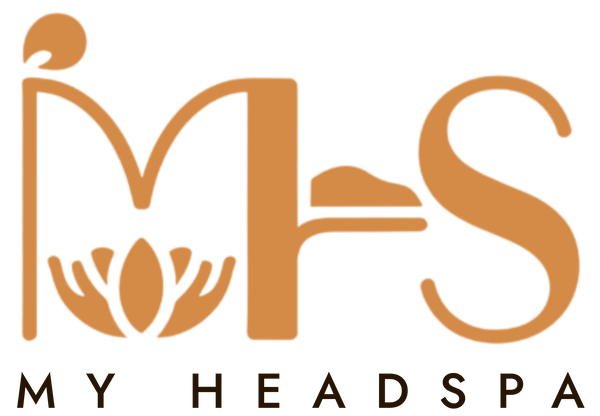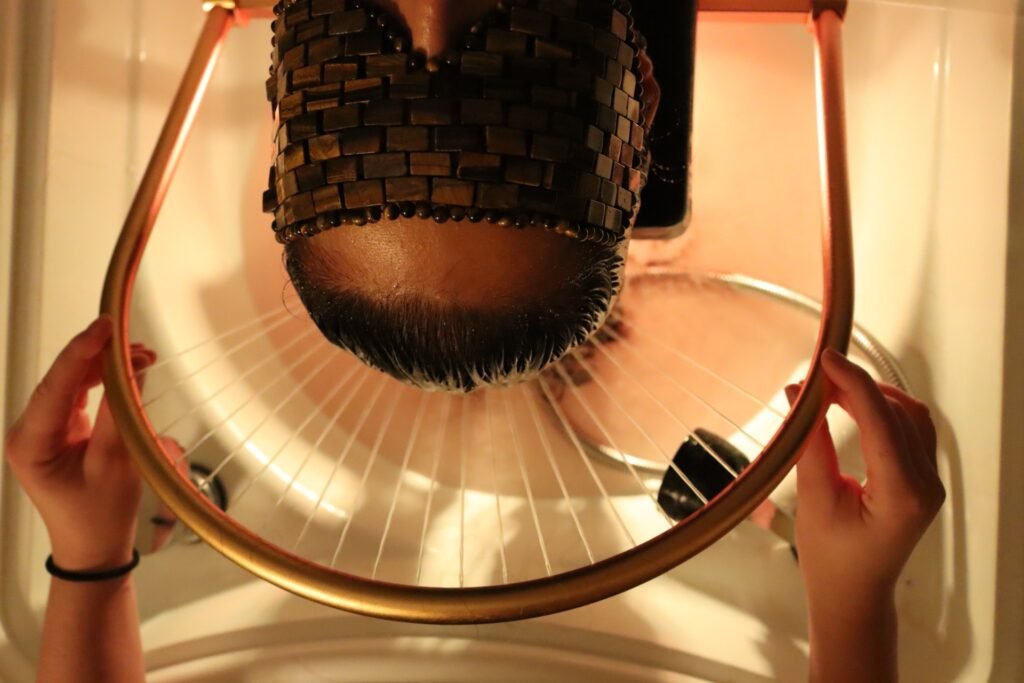Discover how to master effective scalp massage techniques to improve your well-being. These simple techniques can transform your hair care routine into a relaxing experience. A good scalp massage stimulates blood circulation, promotes hair growth, and soothes the mind. You'll feel revitalized and relaxed in no time. In this article, we'll guide you through the essential steps for a successful massage. Get ready to discover the secrets of a healthy scalp and start reaping the benefits today.
Scalp Massage Techniques for Optimal Relaxation
Feeling stressed? A scalp massage could be the answer! There are several simple yet effective techniques to help you relieve stress and improve the health of your hair. So, why not try these scalp massage techniques to relax after a long day?
Scalp Massage Techniques: Effleurage and Gentle Pressure
Effleurage and gentle pressure are ideal techniques for beginning a scalp massage. Effleurage involves light, gliding movements, perfect for soothing stress. Gentle pressure is performed with your fingertips to stimulate the scalp painlessly.
These techniques promote immediate relaxation. Plus, they're easy to perform yourself or on a client. Don't forget to add a personal touch by choosing an oil scent you like. This will transform the experience into a truly enjoyable one. Who doesn't want a little relaxation time every now and then?
Scalp Massage Techniques: Friction and Rotation
For those who want to go further, try friction and rotation. These scalp massage techniques require a little more energy but are super effective at warming the skin and stimulating blood circulation. By using intense circular motions, you release built-up tension and make your scalp more supple.
These practices aren't just relaxing. They also help maximize the absorption of hair products. You'll see, your hair will be more receptive to the treatments you apply afterward. Have you ever tried combining this with a nourishing shampoo? The results may surprise you!
Scalp Massage Techniques: Tapping and Kneading
Finally, there's tapotement and kneading, perfect for finishing off a scalp massage. Tapping involves small, light, even strokes, activating the surface nerves and relaxing the client. Kneading, on the other hand, engages the underlying muscles for complete relaxation.
These techniques promote total well-being and can even improve sleep. In fact, a few minutes of kneading is sometimes enough to beat insomnia! So, why not try them tonight? Personally, after a busy day, it's exactly what I crave.
List of Scalp Massage Practices
- Effleurage: Light, sliding movements
- Gentle Pressure: Light applicationwxith fingertips
- Friction: Intense circular movements
- Rotation: Circular motion to warm the skin
- Tapping: Small, light, regular strokes
- Kneading: Technique that uses the underlying muscles
Summary Table of Scalp Massage Techniques
By incorporating these scalp massage techniques into your routine, you can treat yourself or your clients to a tailored, personalized treatment for optimal relaxation. Why not start today? You'll see, your efforts will quickly pay off.

Accurate Hair Diagnosis for Effective Results
To achieve optimal results when applying scalp massage techniques , an accurate hair diagnosis is essential. This diagnosis helps identify each client's unique needs and tailor care accordingly. Let's explore how to recognize common hair problems and use tools for a professional hair diagnosis.
Identifying Common Scalp Problems
Before beginning any treatment, it's crucial to identify any issues that may be affecting the scalp. Common problems include dandruff, itching, dryness, or even excessive sebum production. A proper diagnosis helps you understand these concerns and adopt the right scalp massage techniques.
During the diagnosis, take the time to observe and ask questions. Speak with your client to learn about their history and care habits. In your opinion, don't these discussions strengthen the client relationship?
Using Tools and Technologies for Accurate Diagnosis
Today, technology plays a vital role in professional hair diagnostics. Modern tools, such as digital hair microscopes, help examine the scalp and hair closely. This makes it difficult to detect problems with the naked eye.
These technological advances, however, are no substitute for expert judgment. Be sure to balance the use of modern tools with your own judgment. In your opinion, can these technologies really simplify the work of professionals?
List of Tools and Technologies Used
- Hair cameras
- Digital microscopes
- Scalp analyzers
Common Massage Problems and Solutions Chart
Scalp Massage Problems and Solutions
With this understanding of professional hair diagnostics, you're better prepared to effectively incorporate scalp massage techniques. That's the real magic of personalized care, don't you think?

Personalized Hair Care Protocols in Hair Spa
Scalp Massage Techniques play a central role in our journey toward healthy, radiant hair. And if you want to go further, developing personalized hair care protocols is essential to specifically meet each client's needs. So, how do you implement these customized treatments?
Development of Personalized Treatments with Scalp Massage Techniques
Creating a personalized hair treatment requires careful observation of each client's scalp and hair. Start with a thorough hair diagnosis to identify specific needs. Then, tailor treatments by incorporating Scalp Massage Techniques to optimize the effectiveness of the applied products. For example, a massage before applying treatments promotes the absorption of active ingredients, while providing much-needed relaxation.
Personalized treatments can include moisturizing, restorative, or revitalizing treatments, depending on the hair's condition. By using these methods, you offer a tailored solution that not only benefits hair health but also the client's overall well-being.
Use of Products Adapted to Specific Needs
Personalization also involves choosing perfectly tailored products. This requires understanding the specific formulations that meet your clients' hair needs. The right hair products should be chosen based on their hair and scalp type, as well as any issues they may be experiencing, such as dryness or brittleness. Make sure your treatments include natural ingredients to avoid any negative reactions and keep their hair healthy.
During hair spa treatments, it is essential to use scalp massage techniques to increase the effectiveness of the products. These massages stimulate blood circulation and allow for better nutrient absorption, thus maximizing treatment results.
Hair Relaxation Techniques with the Help of Hair Spa Devices
We can't talk about personalized hair care protocols without mentioning relaxation. After all, relaxation is a key element of a hair spa! Incorporating Hair Spa Devices can elevate your offering. These devices, designed to amplify feelings of relaxation, perfectly complement Scalp Massage Techniques. They help reduce stress, promoting better scalp and hair health.
Devices like massage caps or steamers can be incorporated into your routine to offer your clients a moment of pure well-being. Not only are they relaxing, but they also increase the effectiveness of treatments by opening the hair cuticle for better product penetration.
List of Benefits of Personalized Protocols
- Improved hair health
- Increased relaxation and rest
- Faster visible results
- Enriched Customer Experience with Scalp Massage Techniques
Summary Table of Techniques Used
By personalizing hair care at your hair spa with a smart combination of diagnostics, products, and scalp massage techniques, you guarantee a holistic and personalized approach that will satisfy even the most demanding clients. Remember, every treatment is unique, just like every individual.

FAQ - Scalp Massage Techniques
1. Why is scalp massage beneficial for health?
Scalp massage improves blood circulation. This brings more oxygen and nutrients to the hair roots. It can reduce stress and tension, aiding relaxation. To experience these benefits, try a gentle massage for 5 to 10 minutes every day.
2. How to do a scalp massage at home effectively?
For a good massage, use your fingers and make circular motions. Start at the forehead and work your way back. Use light pressure to avoid damaging the scalp. You can also add a few drops of your favorite essential oil for a relaxing experience.
3. What oils are recommended for massaging the scalp?
Essential oils like lavender and rosemary are popular. They help relax and stimulate the roots. Coconut oil and argan oil nourish and moisturize. Apply a few drops and massage gently for best results.
4. How often should I massage my scalp?
A daily 5- to 10-minute massage is ideal. It stimulates circulation and strengthens hair. If you're short on time, a session three times a week is already beneficial. Make it part of your hair routine for optimal results.
5. Can scalp massage help hair growth?
Yes, massage improves blood circulation, which stimulates hair follicles. This can encourage hair growth. Combined with a healthy diet, it can improve hair density and quality. Be consistent and patient to see the best results.


